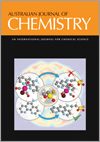
Australian Journal of Chemistry
Volume 74 Number 3 2021
CH20149Application of the Variable Oxygen Probe to Derivatives of 2,6-Dimethyltetrahydropyran-4-ol: Evidence for Through-Bond nO–σCC–σ*CO Interactions
 , Amber Hancock and Samuel Brydon
, Amber Hancock and Samuel Brydon

Application of the variable oxygen probe to derivatives of 4-pyranols 4 and 5 provides structural evidence for the presence of through bond nO–σCC–σ*CO interactions in 5.
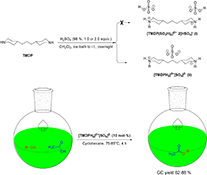
A new ionic liquid is synthesised, and its chemical structure is elucidated. Some physical properties were investigated. The formation of a two-protonic acid salt namely 4,4′-trimethylene-N,N′-dipiperidinium sulfate instead of 4,4′-trimethylene-N,N′-dipiperidinium hydrogensulfate was proved. The catalytic activity of this ionic liquid was demonstrated in the esterification.
CH20125Leptanoine D, a New Quinoline Alkaloid from the Australian Tree Pitaviaster haplophyllus (Rutaceae)
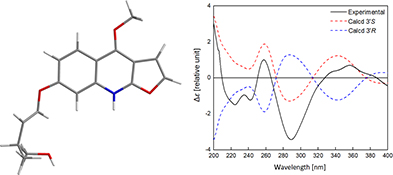
A chemical investigation of Pitaviaster haplophyllus, an Australian rainforest tree, led to the identification of a new quinoline alkaloid leptanoine D. Its absolute configuration was assigned through comparison of experimental and quantum mechanical calculated ECD spectra.
CH20174Synthesis of Atomically Thin CdTe Nanoplatelets by Using Polytelluride Tellurium Precursors
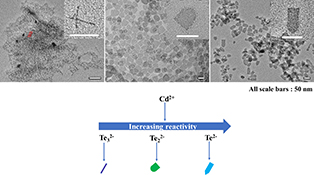
CdTe nanoplatelets (NPLs) were synthesised by simply tailoring the reactivity of the tellurium (Te) precursor. Ribbon-, shield-, and bullet-like CdTe NPLs were prepared by using Te32–, Te22–, and Te2– polytellurides as the tellurium precursor, respectively. This work develops a synthetic strategy for wurtzite CdTe nanoplatelets with controlled shapes.
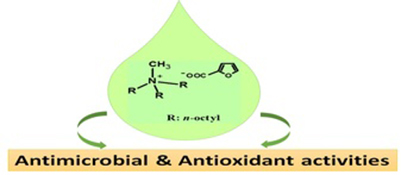
A functionalised ionic liquid (FIL), N-methyl-N,N,N-trioctylammonium furoate ([MTOA]+[FA]–) has been studied for antimicrobial and antioxidant activities. The in vitro antimicrobial activity was tested by well diffusion method and it was found that [MTOA]+[FA]– is a capable antimicrobial ionic liquid. Moreover, the synthesised FIL showed a moderate antioxidant activity.
CH20215Electrochemically Exfoliated Graphene/Manganese Dioxide Nanowire Composites as Electrode Materials for Flexible Supercapacitors

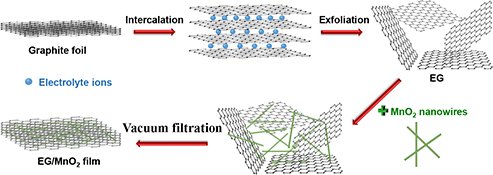
Electrochemically exfoliated graphene/manganese dioxide nanowire composites have been prepared as efficient electrode materials for flexible supercapacitors. In the composites, graphene nanosheets mainly play the role of skeleton support, enhance conductivity, and provide electric double-layer capacitance, while the MnO2 nanowires mainly provide pseudocapacitance.
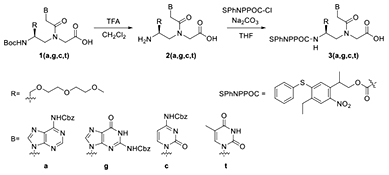
Thiophenyl-2-(2-nitrophenyl)propoxycarbonyl (SPhNPPOC)-protected chiral (R)-diethylene glycol–peptide nucleic acid (miniPEG-γPNA) monomers are synthesised, and the photolabile efficiency is about twice that of the 2-(2-nitrophenyl)propyloxycarbonyl (NPPOC)-protected monomer. The monomers are expected to be used for the efficient and rapid fabrication of chiral miniPEG-γPNA microarrays through a photolithographic strategy.
CH19184Synthesis and Structures of 1,1′,2-Tribromoferrocene, 1,1′,2,2′-Tetrabromoferrocene, 1,1′,2,2′-Tetrabromoruthenocene: Expanding the Range of Precursors for the Metallocene Chemist’s Toolkit
 , Michael Beaumont, Michael I. Bruce
, Michael Beaumont, Michael I. Bruce  , Natalia N. Zaitseva, Jonathan A. Iggo, Craig Robertson, Peter N. Horton and Simon J. Coles
, Natalia N. Zaitseva, Jonathan A. Iggo, Craig Robertson, Peter N. Horton and Simon J. Coles
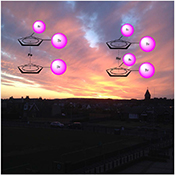
1,1′,2,2′-Tetrabromoferrocene and 1,1′,2,2′-tetrabromoruthenocene have been prepared using the α-lithiation method. Their crystal structures are presented as part of a general survey on the literature methodology. 1,1′,2,2′,3,3′-Hexabromoferrocene has been characterised and its general properties described.
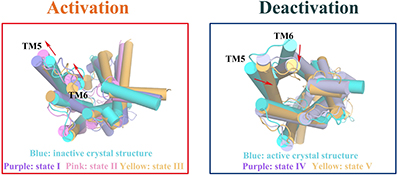
Combined aMD and cMD were used to simulate the active and inactive GLP-1R, coupled with PMF calculation, PSN and correlation analysis to study the activation and deactivation mechanism. Results showed that the allosteric communication pathways in the two processes are different, and signal transduction is not reversible. The work could advance our understanding of the activation mechanism of GLP-1R.
CH20127 Abstract | CH20127 Full Text | CH20127PDF (1.5 MB) | CH20127Supplementary Material (797 KB) Open Access Article
CH20144Niobium Pentachloride (NbCl5)
 and Tiago L. Silva
and Tiago L. Silva
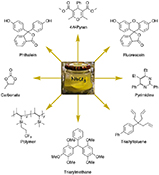
Niobium pentachloride (NbCl5) is the most used niobium catalyst in organic chemistry. This manuscript briefly reviews some new and interesting applications of this catalyst, like the preparation of 4H-pyrans, phthaleins, fluoresceins, pyrimidines, triallyltoluenes, triarylmethanes, polymers, and cyclic carbonates which are interesting natural products, biologically or industrially relevant compounds. This short review promotes more usage of the catalyst in organic chemistry.



